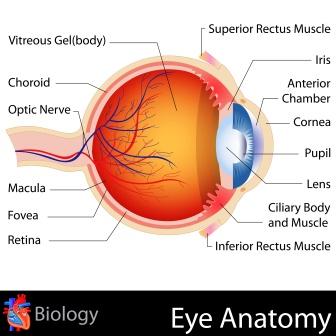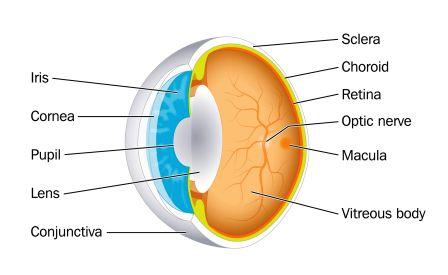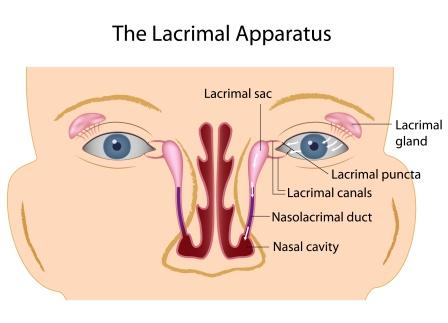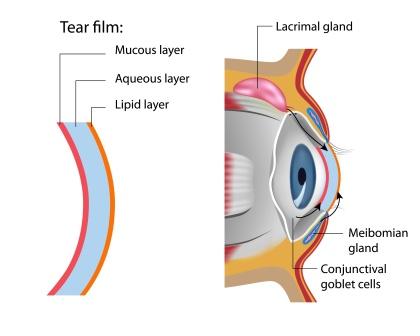Anatomy of Eye: Netra Rachana: Ayurveda Perspective
Article by Dr Raghuram Y.S. MD (Ay) and Dr Manasa, B.A.M.S
It is said that eye is the best among all the Indriyaas (sense organs). It makes sense and is true to every bit. We couldn’t have enjoyed a better and colorful world around us if it weren’t for our eyes.
Table of Contents
Synonyms, importance of eyes
Synonyms of Eye in Sanskrit:
Chakshu, Nayana, Netra, Akshi.
Importance of eyes:
sarva indriyANAM nayanaM pradhAnaM| (suzruta)
Chakshu is the anatomical eye. It is the place for Chakshu Indriya (the functional component of the eye which helps us to see) which serves the function of Rupa Grahana i.e. perception of vision.
Chakshu Indriya located within our eye is said to be responsible for Pratyaksha Anubhava, knowledge of the objects of vision in their true sense, i.e. as they are.
Related reading – Indriya Pancha Panchaka: 5 Fives Of Sense Organs

The knowledge gained by all the other indriyaas is also called Pratyaksha. The word Pratyaksha is split into 2 components i.e. Prati and Aksha which means ‘along with the eye’. This term actually denotes perception of visual objects through the eye (knowledge of visual objects) and should have been limited to only Chakshu Indriya. But the term is commonly used for all the indriyaas. This shows the importance of eyes. This also shows that Chakshu Indriya and Chakshu as a single unit were given highest accord and status by Ayurvedic teachers of ancient time who also pronounced that the Nayana is the best Indriya among the lot.
Chakshu (eye) is the anatomical eye which is visible to us. Chakshu indriya is the functional component located within the eye which helps us in seeing things and in visual perception of objects around us.
Therefore it is clear that the anatomical eye is totally different from the Chakshu Indriya which helps us to perceive visual objects. Chakshu Indriya is located within the Chakshu or Nayana and has Aashraya-Aaashrayi Sambandha i.e. the relationship of a house (Chakshu) and tenant (chakshu indriya).
Read related: Ayurveda Eye Treatment Types, Methods – Astanga Hrudaya Sutrasthana 23
Anatomy of eye
Netra Rachana – Anatomy of eye:
Relation of Netra and Pancha Mahabhutas
The whole body is created from Pancha Mahabhutas or 5 basic elements of nature.
Chakshu Indriya is also created from Pancha Mahabhutas but is predominantly from Agni Mahabhuta – Fire element.

The mechanism of vision (rupa grahana) is possible in the presence of light. We cannot see in darkness. Agni mahabhoota represents light (fire is the form of light which helps us to see things when it illuminates the things around it). When this fire component is intact and healthy in the eye, we can see. Absence of fire element in the eye makes us blind. The anatomical eye is present but the mechanism of seeing things is lost as the fire in the eye is absent and it cannot show us the things around us. When the same fire is weak, we have dim vision. When the fire component is disturbed in varied proportions we suffer from visual disorders.
Read related: Netra Tarpana Treatment For Eye Care: Benefits, How To Do?
The eyeball
Netra Budbuda or Akshi Golaka (The Eye Ball)
vidhyAd dvi aGgula bAhulyaM tu aGguSTha udara sammitam|
dvi aGgulaM sarvataH sa arddhaM bhiSak nayana budbudam||
suvRtaM go stanAkAraM sarva bhUta guNa udbhavam||
palaM bhuvo agnito raktaM vAtAt kRSNaM sitaM jalAt|
AkAzAd azru mArgaH ca jAyante netra budbude||(su.u.1/10-11)
Netra = Eye, Budbuda = Bubble
The eye ball is in the shape of a bubble. Therefore it is called Netra Budbuda.
Eye Ball is also called as Akshi Golaka (Akshi = Eye, Golaka = rounded structure, ball like structure)
Dimensions
Dimensions of Netra Budbuda as per Sushruta:
– Netra Baahulya i.e. antero-posterior dimension (front to backwards) – 2 angushta udara or 2 angula
– Netra Aayama i.e. length of eyeball – 2 ½ Angula
– Netra Vistaara i.e. breadth of eyeball – 2 ½ Angula
(Note – Angula is the transverse (side to side) measurement or breadth of the middle segment of one’s own middle finger)
Shape
Shape of the eyeball
– Suvvrutta – Rounded
– Gostana Aakara – resembling the shape of the breast of a cow udder (Go Stana)

Origin
Origin of the Netra Budbuda –
‘Sarva Bhuta Guna Udbhavam’ i.e. the eyeball has its origin from the qualities of all the Mahabhootas (elements of nature).
Netra Pala
Netra Pala (the fleshy part of the eye) – created from the Prithvi Mahabhoota (Earth element)
Rakta Bhaga (bloody part of the eye) – created from Agni Mahabhoota (fire element)
Krishna Bhaaga (black portion of the eye) – created from Vayu Mahabhoota (air element)
Sita or Shweta Bhaga (white portion of the eye) – created from the Jala Mahabhoota (water element)
Ashru Maarga (tear or lacrimal passages, tear ducts) – created from Aakaasha Mahabhoota (Space, Ether element)

Parts of Netra
maNDalAni ca sandhIM ca paTalAni ca locane|
yathAkramaM vijAnIyAt paMca SaT ca SaD eva ca||(su.u.1/14)
Netra is made up of –
– Mandalas or circles – 5 in number
– Sandhis or junctions – 6 in number
– Patalas or Layers (tunics) – 6 in number
Netra mandalas
pakSma vartma zveta kRSNa dRSTInAM maNDalAni tu|
anupUrvaM tu te madhyAH catvAro antyA yathA uttaram||(su.u.1/15)
Mandala means circle. Considering the eye ball to be circular (netra golaka, netra budbuda) different structures of the eye was seen in a circular way, to be anatomically arranged in a circular way. These circles of the eye are called Mandalas. Mandalas are 5 in number. They are as below mentioned –
- Pakshma Mandala – This circle is made up of eye lashes (eye lashes are arranged in a circle).
- Vartma Mandala – This is the circle made up of eye lids (both eyelids appear to make a circle).
- Shweta Mandala – This is the circle made by Sclera or white of the eye (the outer tunic of the eye)
- Krushna Mandala – This is the circle made up of Iris or black of the eye (the middle tunic of the eye) and corneal circle
- Drushti Mandala – This is the circle made up of Retina (the inner tunic of the eye)
Krushna Mandala measures one third (1/3) of the measurement of Netra Budbuda (eyeball). Drushti Measures one seventh (1/7) of the measurement of Krushna Mandala.
Netra Sandhis
pakSma vartma gataH sandhiH vartma zukla gato aparaH|
zukla kRSNa gataH tu anyaH kRSNa dRSTi gato aparaH|
tataH kanInaka gataH SaSThaH ca apAGgaH smRtaH||(su.u.1/16)
Sandhis or junctions of the Netra are 6 in number. They are as mentioned below –
- Pakshma Vartma Gata Sandhi – This is the junction of Pakshma (eyelashes) and Vartma (eyelids or palpabrae) of the Netra.
- Vartma Shukla Gata Sandhi – This is the junction of Vartma (eyelids or palpabrae) and Shukla bhaga (Sclera or the white of the eye) of the Netra.
- Shukla Krushna Gata Sandhi – This is the junction of Shukla Bhaga (Sclera or white of the eye) and Krishna Bhaga (Black of the Eye or Iris) of the Netra. This can also be correlated with the Sclero-Corneal Junction or Limbus. But since Cornea is transparent, it is wise to take Iris as Krishna Bhaga.
- Krushna Drushti Gata Sandhi – This is the junction between Krushna Bhaga (Black of the eye or Iris) and Drushti (aperture / slit of the Iris). This Sandhi represents the margins of the Pupil. Pupil is a small opening at the centre of the Iris.
- Kaneenikaa Sandhi – This is the junction of the upper and lower eyelids on the inner side, i.e. near the nose. It is called the inner canthus of the eye or the Inner angle of the eye.
- Apanga Sandhi – This is the junction of the upper and lower eyelids on the outer side. It is called the outer canthus of the eye or the Outer angle of the eye.
Netra Patala
dve vartma paTale vidhyAt catvAri anyAni ca akSiNi|
jAyate timiraM yeSu vyAdhiH parama dAruNaH||
tejo jalAzritaM bAhyaM teSu anyat pizita Azritam|
medaH tRtIyaM paTalam Azritan tu asthi ca aparam||
paJcamAMza samaM dRSTeH teSAM bAhulyamiSyate||(su.u.1/17,18)
Patalas or Tunics are 6 in number. They are –
Prathama Patala (first layer or tunic)
It is also called as Tejo Jala Aashrita Patala. It is related to Teja (fire element) and Jala (water element). This means to tell that this layer is formed by the predominance of fire and water elements. According to Dalhana (commentator of Sushruta Samhita), prathama patala is the seat of Alochaka Pitta (subtype of Pitta). This pitta helps in perception of objects of vision. It is the first medium or part of the eye which receives the light.
Modern correlation – Prathama Patala can be correlated with Cornea and Aqueous Humour.
Dwiteeya Patala (second layer or tunic)
It is also called Mamsa Aashrita Patala. This layer is made up of Mamsa Dhatu (muscle tissue of the eye).
Modern Correlation – This layer can be correlated with Iris and Ciliary body of the eye.
Triteeya Patala (Third Patala)
This Patala is also called Medo Aashrita Patala. This layer is made up of Medo Dhatu (fat tissue).
Modern correlation – This layer can be correlated with the Vitreous Body or vitreous humor
Chaturtha Patala (Fourth Patala)
This Patala is also called Asthi Aashrita Patala. It is located deep in the eye and forms the bony component of the eye socket. This layer is made up of Asthi Dhatu (bone tissue).
Modern Correlation – This layer can be compared with the orbit (bony socket making the place for the eyeball) or periosteum of the orbit.
Panchama and Shashta Patala (Fifth and Sixth Patala)
The fifth and sixth Patala constitute the Vartmaas i.e. eyelids. They are called Vartma Patalas. Fifth Patala forms the upper eyelid and Sixth forms the lower eyelid.
Modern Correlation – This layer can be compared with the eyelids or Palpabrae of the eyes.
Read related: Triphala Home Remedy For Eye Care
Drushti
Drushti, the sight or vision
masUra dala mAtraM tu paJca bhUta prasAdajam|
khadhyota visphuliGgA AbhAmiddhAM tejobhiH avyayaiH||
AvRtAM paTalena akSNoH bAhyena vivara AkRtem|
zIta sAtmyA nRNAM dRSTim AhuH nayana cintakAH||(su.u.7/3,4)
Drushti is made up of Pancha Maha Bhutas (five elements of the nature). It resembles the khadyota (shining insect) and visphulinga aabha (spark of the fire). It has long lasting Tejas (the glow which helps us to see and perceive objects) and enveloped by the outer layer of the eye. Its measurement (dimension) is equal to the size of the Masura Dala (cotyledon of Lentil grain). It accommodates according to the effect of heat and cold.
Modern correlation – Drushti can be compared to the pupil. But Pupil is only an aperture (small opening in the iris) and it cannot be a structure. In the description of Drishti Gata Rogas i.e. diseases occurring in the Drushti, Ayurvedic texts have touched a few diseases which correlate with the diseases of lens, retina and optic nerve. Thus, by the description Drishti can be correlated with iris and in a broader sense to all the structures involved in vision namely lens, vitreous body, retina and optic nerve should be included in the term Drushti.

Netra Upanga
Netra Upaangas (Appendages of the Eye)
Ashru Maarga (Lacrimal apparatus) –
Ashru Maarga or Ashru Srotas (lacrimal apparatus, lacrimal ducts, ducts which form and carry tears) extends between Naasa (nose) and Netra (eye). It measures about 4 angulas.
Kaneenikaa (inner canthus) –
It is the inner angle of the eye formed by the junction of both eyelids near the nose. Kaneenika is thus the joint present in the eyes at the level of Naasa (nose) and the inner end of the eyebrow. They are 2 in number and located in the medial side of the eye on either side (both eyes).
Apaanga (outer canthus) –
It is the outer angle of the eye formed by the junction of both eyelids towards the ear or hair locks. Apaanga is thus the sandhi present in the eyes away from the nose, near the ear and hair locks and near the outer end of the eyebrow. They are 2 in number and located in the lateral side of the eye on either side (both eyes).
Read related: Watery Eyes: Causes, Ayurvedic Treatment, Remedies
Just before Finishing
Eye is the best among the sense organs. Ayurveda is the first medical science to explain the anatomy of the eye in a complete and comprehensive way. This article is to present the anatomy of eye through the eye of Ayurveda.
Click to Consult Dr Raghuram Y.S. MD (Ayu)










5 comments on “Anatomy of Eye: Netra Rachana: Ayurveda Perspective”
S k asthana
Excellent information
Priya
Thanks for your excellent information. Request you to kindly enlighten us on Ayurvedic perspective on Refetoff syndrome.
Dr J V Hebbar MD(Ayu)
Welcome. Will try to cover this topic in future.
Radhika S
Their are any types of krushana mandala?
Dr J V Hebbar MD(Ayu)
Please read
https://www.easyayurveda.com/2019/09/12/netra-krishnagata-rogas/